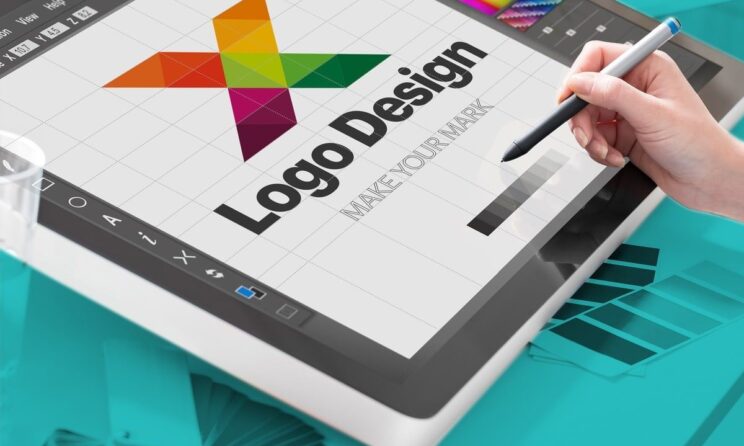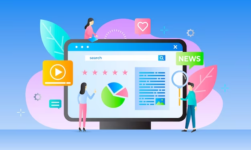
You’ve spent hours, weeks, and years becoming familiar with designing multiple software and spent time developing an extensive portfolio; what’s next GRAPHIC DESIGNER?
The field of design is huge, encompassing several disciplines in itself.
For a graphic designer, deciding which field to step into can be intimidating.
As a field, graphic design involves creating visual objects by making artistic choices regarding type, color palette, layout, and imagery.
Luckily, the demand for graphic designers is immense. Due to a constant need for visual elements and designs, companies are on a constant hunt for talented designers.
However, a graphic designer doesn’t have one fixed role, the category is divided into further specializations.
Based on the specialty that aligns most with your skillset, you can decide what job or career opportunities fit your requirements.
Here are some fields of graphic design to choose from:
1. Logo GRAPHIC DESIGNER
Thousands of brands emerge into the market daily; these companies need something to help differentiate from other competing brands, which is where logos enter the scene.
Logos is an element that symbolizes brands and makes them recognizable;
it provides a visual aid for audiences to associate with the company and its name.
The demand for logos is high; many companies seek a custom logo design agency to have a professionally created logo.
A custom logo design agency researches on market trends, the company, and the client’s ideas before building a logo that incorporates all these factors.
Logo designers need to know several industries, be willing to research, use a strategic approach, and maintain constant communication with clients.
If you’re part of a custom logo design agency, you must be prepared to work under a team and collaborate with designers.
Logo design is about creativity but most importantly, the field focuses on taking examples and inspiration from previous successful case studies.
2. Branding and Identity
If logo design intrigues you, but you need a field that allows more creativity, branding might be the option for you.
In a way, branding is an extension of logos.
Like logos, branding becomes a permanent and significant part of brand identity.
It holds designs, colors, and fonts that repeat throughout the brand’s services, products, packaging, and marketing campaigns.
By developing a consistent look and branding, companies build trust and familiarity with their brand.
A well-crafted branding is responsible for generating an emotional response from the audience, allowing customers to connect with brands on a deeper level.
As a branding person, your duties would be similar to those of a logo designer.
However, you will need to constantly ideate and think outside the box as the focus of branding is to help distinguish a company.
With each project, you will be responsible for creating designs that add value to client brands.
3. Print Design
If following a traditional route is more your cup of tea, you should consider print designing.
Print design is a field of graphic design that creates material for printing purposes.
Rather than existing virtually, print designs exist physically.
As a print designer, you need to ensure your designs turn out well in print form by maintaining quality, colors, and scale.
Here are some popular uses of print design:
- Newspapers and Magazines
One of the oldest uses of print design includes newspapers.
This includes compiling and placing articles, headlines, and advertisements in a standard layout while ensuring a consistent visual design.
The focus of newspapers and magazines is to inform and entertain.
- Business Cards
A small-scale use of print design is creating business cards.
These cards are used by business professionals, sellers, and freelancers to promote their brands and services.
A business card usually holds a brand’s credentials and contact details.
- Brochures
Brochures are a smaller version of booklets.
They are used by businesses and organizations to promote products, provide a catalog, serve as an informational guide, etc.
Like newspapers, brochures combine text and images; however, the latter exists on a smaller scale in size and content.
- Posters and Banners
Beyond journalism and business, a big use of print design is designing posters and banners.
This could include posters for movies, shows, artists, and more.
Posters are meant to showcase an artistic work or raise awareness about a subject.
A common application of poster designs is movie posters, used in cinemas to alert visitors about recent and future movie screenings.
4. Web Design
Similar to how print design exists physically, a field of graphic design that is entirely online is web design.
Web design refers to creating visual elements for websites. These include, but are not limited to, icons, layout, buttons, and menus.
If web design focuses on social media, the responsibilities include creating visual content and posts for accounts on these platforms.
As a web designer, you must know about User Experience (UX) and User Interface (UI) Design.
Understanding both fields is necessary to create websites and online platforms that are effective and useful for a target audience.
As a web designer, you must have technical skills and be a great researcher.
Most importantly, your design choices should be influenced by the target audience’s preferences, not your own.
5. Illustration
Have the previous options seemed restrictive of creative freedom?
Don’t worry; illustrations have no such boundaries.
As the name states, illustrations picture ideas and form complete drawings around a topic or content.
People tend to include illustrations to make their work more engaging and appealing.
The aesthetics of illustration add value to platforms, content, and editorials.
They are used alongside text to create space and make the content less overwhelming.
As an illustrator, you must be creative and artistic; you should be capable of creating new ideas and have strong references.
To Conclude
Career opportunities in graphic design are endless.
You could be part of a custom logo design agency, work on branding or print design, create for online platforms, or make illustrations.
The key factor to choosing the right career is comparing your skillset, strengths, and weaknesses to the requirements of each field.
Whichever option aligns with your skills is the ideal career choice!





